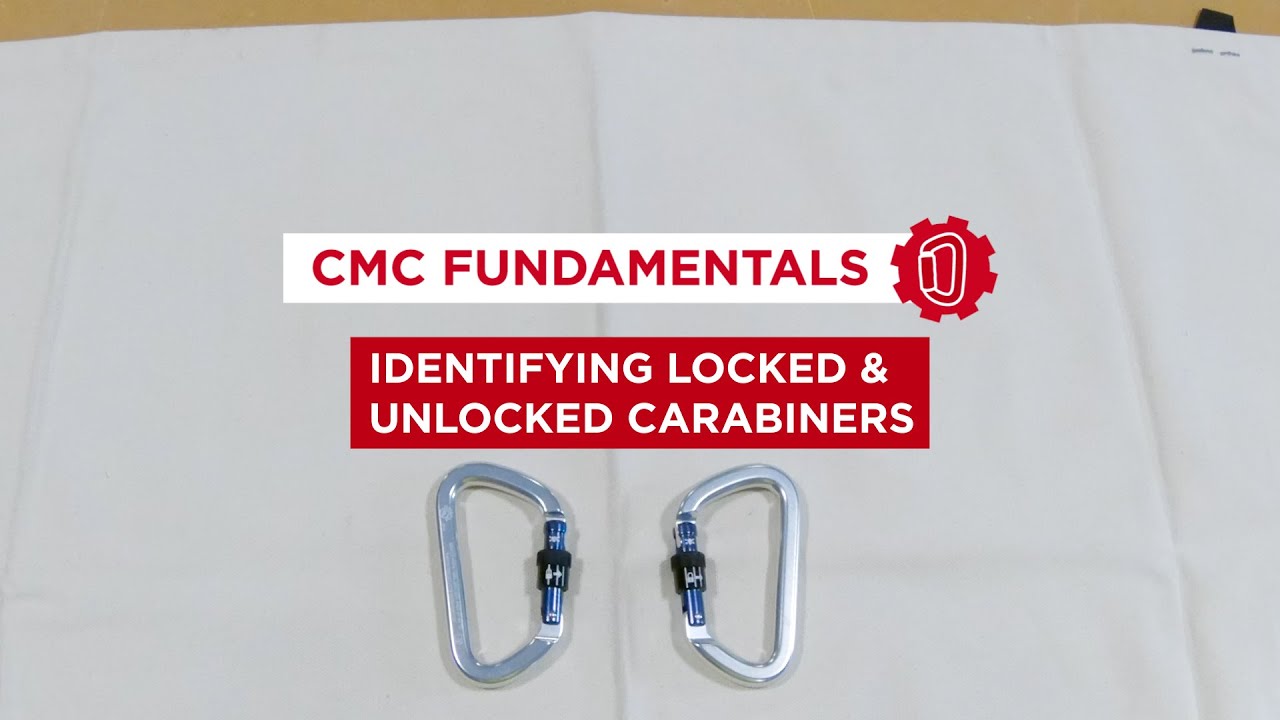Identifying Locked & Unlocked Carabiners // CMC Fundamentals
Welcome to CMC Fundamentals, a series created for technicians who are just getting started in the industry or who want to build their knowledge base.
As mentioned in the video, each carabiner manufacturer has their own way to show that the carabiner is unlocked and which may vary on different models. It may be distinctive graphics, symbols, color coding, visual cues of the hardware itself or a combination of two or more of the above. It is important to be familiar with equipment that you may be called upon to use whether it is personal, department, or team gear. Always remember to complete thorough safety checks before loading a system. If you are not able to touch the component during the safety check, at least point to it.
In this particular video we go over two different carabiners made by CMC. The first is a CMC ProSeries Aluminum Screw-Lock Carabiner. The different ways to tell that the carabiner is unlocked is:
- The skull and crossbones graphic is visible on both sides of the gate.
- You can see that the locking ring is hidden because the lock actually covers it.
- When we look at it from the end we can see the entire key-lock assembly.
- Most importantly of all when we squeeze the carabiner and do a touch test we see that it opens fully.
When we lock the carabiner the graphic is hidden, the lock ring is exposed and is approximately three eighths of an inch or one centimeter down from the bottom of the lock ring. Lastly, when we look at it from the end you’ll see that the key-lock is covered and most importantly of all when we do the touch test we can tell that the carabiner is in fact locked.
Next is the CMC ProSeries Aluminum Manual-Lock Carabiner. The different ways to tell that this carabiner is unlocked are:
- We can see a skull and crossbones graphic through the viewing window on the lock on both sides of the gate.
- When we look at it from the end we can clearly see that the key-lock is exposed.
- When we manually touch the carabiner we can see that the gate freely opens.
In order to lock this carabiner we pull down on the gate and release it. That now locks the carabiner. The skull and crossbones graphic is no longer visible from either side, when we look at it from the end the bottom part of the key-lock is in fact blocked by the lock, and when we do the touch test the gate no longer opens.
So now that we’re sure that the carabiner is locked and we properly load it, this carabiner is ready for use.
CMC Fundamentals will help you understand the basics of technical rope work including knots, anchors, equipment, and entry-level techniques that are important to learn early-on and keep fresh in the mind. For more Fundamentals videos, visit: www.CMCPro.com/blog/Fundamentals/ If you have any questions about equipment or education, please email the CMC Instructors at askaninstructor@cmcpro.com or visit the CMC School page for class schedules.
























